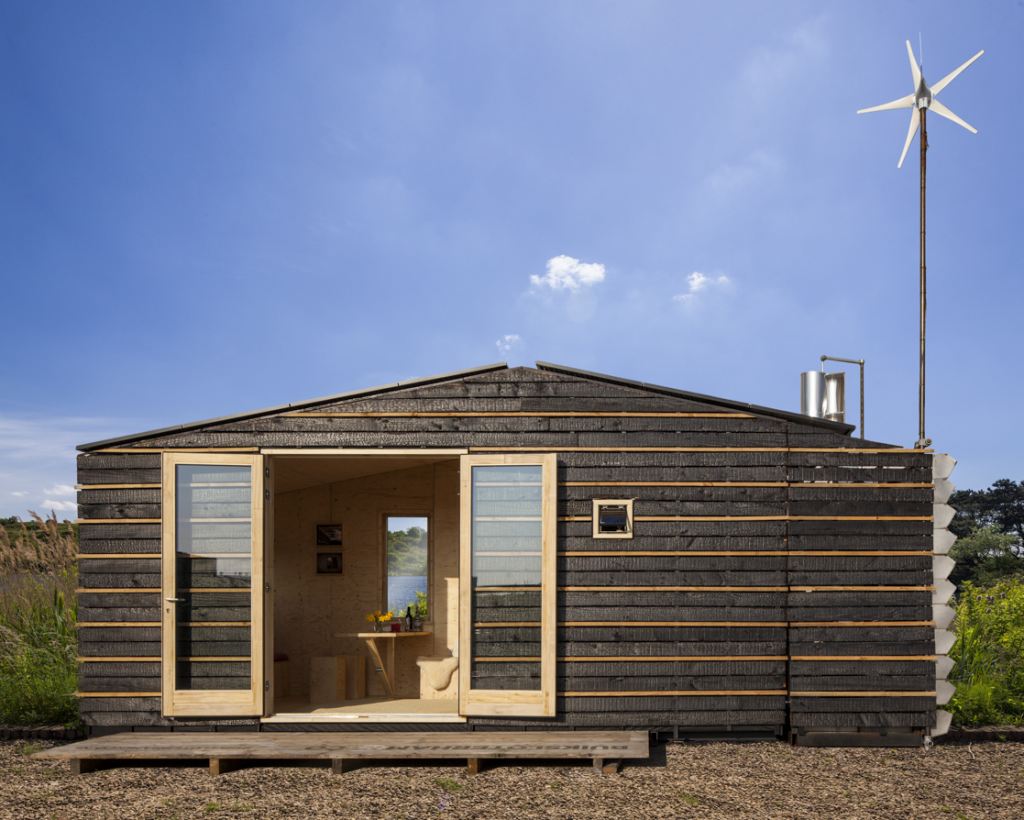
During DDW, the Tiny Tim House is exposed at Strijp-S. The little house fuels itself and is completely durable. In order to live in it, owners will pour 2000 litres of drinkable water in a container and a filtering system existing of plants, gravel and bacteria will do the rest. From then on, the water is contantly replenished by rain water, residu from the shower and, last but not least, urine.”
Who has been around a garden as a kid probably knows: You are not allowed to pee on the plants. But the plants that are attached to Tiny Tim however, actually benefit from urine. “The urine is put into the filtering system, the plants and bacteria fuel themselves with the nutricions in the urine, which leaves nothing but drinkable water”, co-founder and creator Dante Föllmi says.
The Tiny Tim can be driven anywhere and does not have to be wired up or connected to any kind of source. It generates its own power, is heated by hot water out of the container or heat radiation (through electricity) and does not leave anything to waste.
Looking for an apartment
The project started around 1.5 years ago. When Föllmi, as a student at UvA was looking for an student flat in Amsterdam. He -as many others- could not find one, so he decided to sit down with two fellow students and come up with a solution to this problem. Dante’s father, Peter Hans Föllmi, joined the three.
The group saw a possibillity in using empty terrains in the city. At first, an idea for a block of office spaces was drawn up. The building would -as is the case with the Tiny Tim now- be durable and would sustain itself.
That idea came to a halt when the group started talks with the local government. “We were having a hard time dealing with permits and legislation. Until one of the officials said: You have to find a way to go around these rules.”
Read everything about DDW here.
“That is when we came up with the idea to put the house on wheels.” The result of that is something that looks like a holiday home on the outside and feels like a small student apartment on the inside. The house, being about 20 square metres, is aimed to be sold at 60.000 euro. The monthly rent would be around 500 euro. Lower than the average student apartment in Utrecht or Amsterdam. “Plus, there will be no cost for electricity, gas and water.”, Hans Peter Föllmi adds.
Legislation
The model that can be seen at DDW is the third Tiny Tim Home the group has built. The first talks to start the project on a larger scale have been started. The city of Haarlem might take thirteen units in the near future. “As long as we can deal with legislation”, Dante Föllmi says.

legislation seems to offer a challenge to the group. An example: The water that comes out of the filterbox at the back of the home has been cleared as healthy, good, drinking water by a government agency. However, it is not allowed to be passed on to other people. That is only allowed when the water comes out of a tap that feeds of the regular water grids.
Also, the filter system has its downsides. Users that take medication have to be careful. “A woman on birth control pees out a certain amount of estrogen. These are hormones a man has no use for. But he will get them into his body when he drinks the water.”
Taxes are another challenge. Hans Peter: “We do not want to pay on all sorts of property tax that are put on a regular house, which uses up the governments power and water. But there are no rules for this yet. This all has to still be established.”
Dante: “It is though, sure, but it is also a pad on the back: This is how we now we are really innovating..”
The NOS spent a night inside the Tiny Tim, take a look at their experience here.
